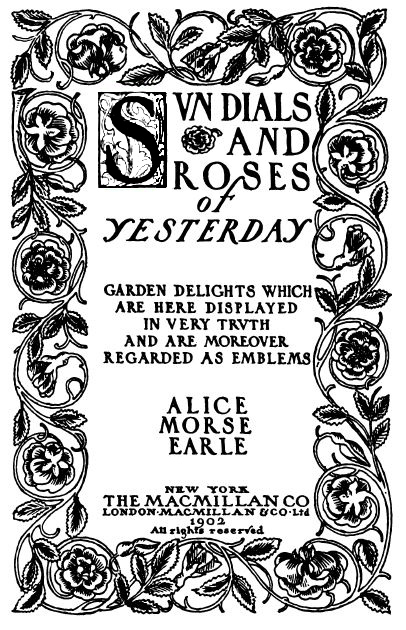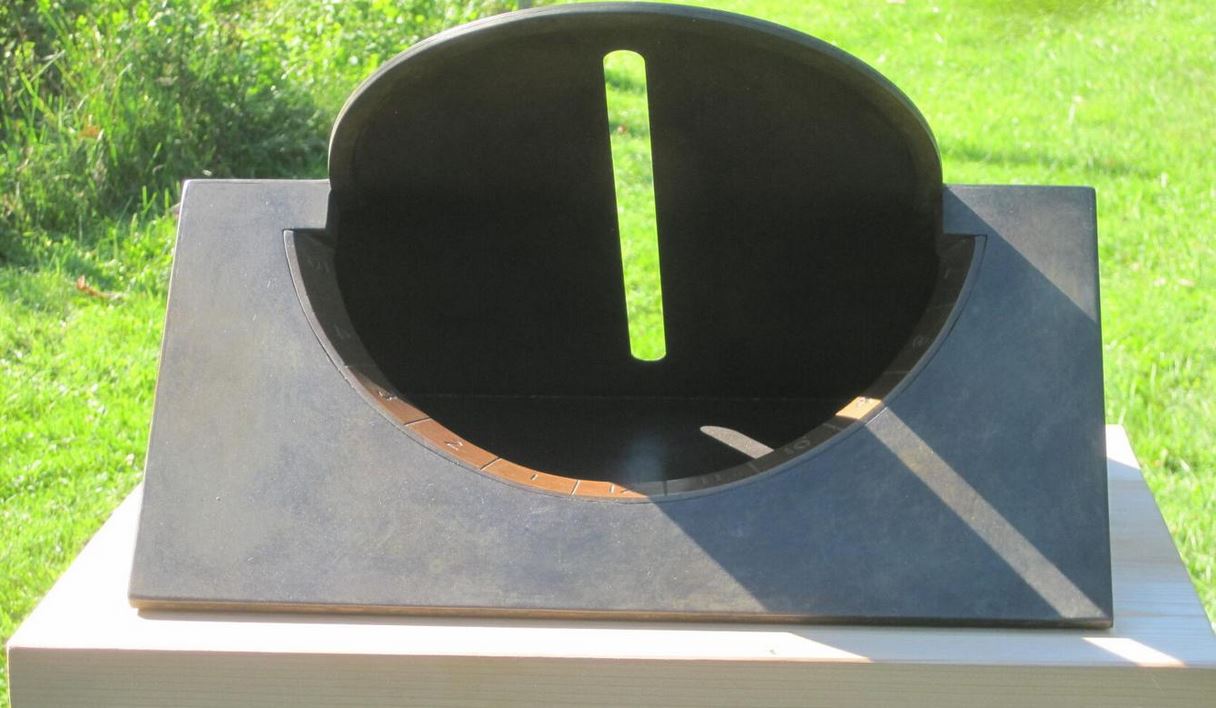 Sundials have always been part of gardens, as witnessed by Alice Morse Earle's book Sun Dials and Roses of Yesterday written 120 years ago. Her book title expanded on the cover with the subtitile "Garden Delights Which are Here Displayed in Very Truth and are Moreover Regarded as Emblems."
Sundials have always been part of gardens, as witnessed by Alice Morse Earle's book Sun Dials and Roses of Yesterday written 120 years ago. Her book title expanded on the cover with the subtitile "Garden Delights Which are Here Displayed in Very Truth and are Moreover Regarded as Emblems."
Thomas Christopher, a volunteer at the Berkshire Botanical Garden is author of a number of books on gardening and creates the Growing Greener podcast (thomaschristophergardens.com/podcast).
In a recent article for the Berkshire Eagle Thomas focused upon gardens and sunlight: Don't know where to put those light-sensitive plants? A sundial can help you figure out the light in your garden. https://www.berkshireeagle.com/arts_and_culture/home-garden/thomas-christopher-better-gardener-sundials/article_2822f5be-1d37-11ec-b39f-0fa8576b3736.html
Christopher said, "There’s a lot of focus these days on solar energy, on harnessing the light from our nearest star to fuel our daily activities. Plants, of course, have been doing just that for millions of years. Sunlight, transformed by the green stuff in their leaves, is the energy that underlies almost all plant growth. Yet, though it is so fundamental to the garden, sunlight is very poorly understood by most gardeners."His interest in sunlight deepended when he met Robert Adzema, a sculptor, artist, and most important, a sundialist for onearly 50 years. Robert is a long time member of the North American Sundial Society and in 2004 Robert and Hal Brandmaier hosted the NASS annual conferance in Tenafly, NJ.
Christopher continued, "Robert is a sculptor who originally became interested in the varying nature of sunlight and its natural cycles because of the impact they have on the appearance of outdoor art. Robert soon moved from speculation to the study of a branch of sculpture that had, over millennia, subjected sunlight to a rigorous analysis. That is, sundials."
"With the encouragement of Robert’s sundials ... I’ve come to appreciate how the apparent motion of the sun across the vault of the sky changes with the seasons. I say “apparent” because of course it is we and the earth that actually move relative to the sun; the sun doesn’t cross the sky, it is just that the rotation of the earth makes it appear to do so. In the winter, the sun appears to ride low in the sky, rising through the spring to summer heights, and then sets again in the fall..."
 "Learning about the changes in the position of the sun relative to the earth has informed my gardening. Instructions for the placement of some light-sensitive plants, for example, recommend setting them where they will receive some early afternoon shade, shelter at the hottest part of the day. I know how to predict such a spot now, rather than merely rely on trial and error. And I know how to locate a spot for spring bulb plantings that will be penetrated by the sun early in the growing season when those plants need the solar fuel, even though it may be shaded later when the summer sun stands higher in the sky," and the bulbs are dormant.
"Learning about the changes in the position of the sun relative to the earth has informed my gardening. Instructions for the placement of some light-sensitive plants, for example, recommend setting them where they will receive some early afternoon shade, shelter at the hottest part of the day. I know how to predict such a spot now, rather than merely rely on trial and error. And I know how to locate a spot for spring bulb plantings that will be penetrated by the sun early in the growing season when those plants need the solar fuel, even though it may be shaded later when the summer sun stands higher in the sky," and the bulbs are dormant.
"The greatest benefit of a sundial in the garden, according to Robert, is the connection it creates between the viewer and the place. Reading a sundial unites the reader with the placement of the garden on the earth and with the season as well as the time of day and the heavens. Sundials, we agreed, take their time, in every sense of the phrase."
